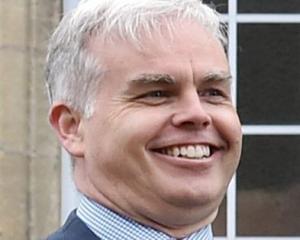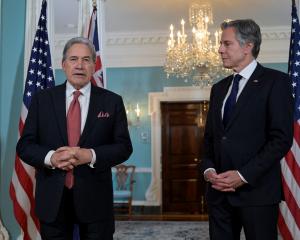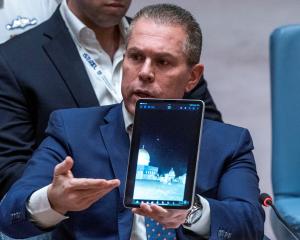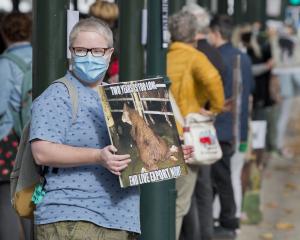Andrew Penniket calls for an end to the ''stalling'' which he says is blocking the establishment of Otago marine reserves.
When it comes to protecting our seas, Otago is the most backward region in the country.
It is now nearly 40 years since New Zealand's first marine reserve was created at Goat Island, in Northland.
This reserve is visited by more than 200,000 people each year including dozens of school groups and it has resulted in well over 100 scientific papers.
Around New Zealand there are now more than 30 marine reserves (complete no-take areas closed to all fishing and harvesting) - even Canterbury has a marine reserve, but there is not a single one in Otago.
Some would argue that there are other ways of protecting the sea - quota limits for commercial fishing, size and catch limits for recreational fishing, taiapure - but these are simply ways of managing fisheries. None of these approaches protects intact healthy populations where animals can reach large size and have maximum breeding output. Only marine reserves can do this.
Marine reserves - who needs them? Well, in my opinion, we all do. Firstly, - for education. If we want our children to grow up respecting the environment they need to be able to see healthy habitats where they can interact with marine life - blue cod, kina and crayfish.
Nothing convinces one of the need for marine reserves more than watching a child emerge from the sea bubbling with enthusiasm and their eyes out on stalks. It is just not the same on a typical stretch of fished coast where, if they are lucky, they might catch a glimpse of fleeing fish.
Marine reserves are essential for research purposes - scientific study needs undisturbed populations to measure parameters such as growth rates, fecundity and to gauge natural mortality. Protected areas are also important to work out food web linkages - like the importance of crayfish for controlling numbers of kina - sea eggs, which help determine the amount of kelp forest, which affects the amount of fish life.
Marine reserves provide baselines for monitoring of populations - to separate mortality due to fishing from other possible background effects like pollution, global warming, diseases and sediment deposition.
Marine reserves are a magnet for tourism. The Goat Island Marine Reserve supports cafes, dive centres, glass-bottom boats, motels and shops. Likewise, the Poor Knights Marine Reserve pumps millions into the local economy and supports more than 100 jobs.
Waters protected by marine reserves become breeding sanctuaries where animals like cod, moki and crayfish can grow to become large adults. It is well known that in the marine world large individuals produce many times the number of larvae than smaller, younger fish can - with crayfish up to 25 times the number. And from these sanctuaries larvae are carried by currents to repopulate the adjacent coastline.
So who is to blame for Otago being so far behind the rest of the country? There is no question there has been opposition to marine reserves in the past and often it is a case of not knowing what we are missing out on. But ultimately central government has been lacking leadership and, in the last seven years, stalling again and again by creating a convoluted obstacle course of bureaucracy.
In 2005, the Department of Conservation was close to announcing a proposal to make the Nuggets area in South Otago a marine reserve but the politicians got cold feet and a few days before it was due to be announced they called a moratorium on any new marine reserve proposals.
First of all, it was said that there would be a forum of representatives from various interest groups (fishers, conservationists, scientists) to look at potential areas. This was a good idea but several months were spent with no progress and then it was shelved when another process was instigated: to establish guidelines and standards. But it took until 2007 for the guidelines and standards to be written, debated, submitted upon and then another year before anything was announced.
Then, suddenly, a new requirement popped up - what was really needed, we were told, was a ''gaps analysis'' - an extensive survey to determine which areas and habitats do not have any marine protection.
This seemed to many people to be a particular waste of time and money since we already knew there are no marine reserves in Otago. At the beginning of 2009, we were told the analysis should be complete by July 2009 and now it is October 2012 and still nothing has been presented - nothing to show for more than three years' work.
The gaps analysis is rumoured to be finished but until the Government makes a commitment to Otago nothing can be done. No individual or group can afford the expensive rounds of advertising, consultation, proposal preparation, submission analysis, readvertising, reconsultation, more analysis, further refinement and further advertising that are required for the marine reserve process.
So what are we waiting for?
Essentially, we need to tell politicians and bureaucrats in Wellington that Otago's seas are important - and it seems the only way that is going to happen is to make it an election issue.
Mr Penniket is a member of the Otago Conservation Board and an underwater film-maker, with a lifelong interest in marine reserves. He has dived in many parts of the Pacific and most of New Zealand's marine reserves.












